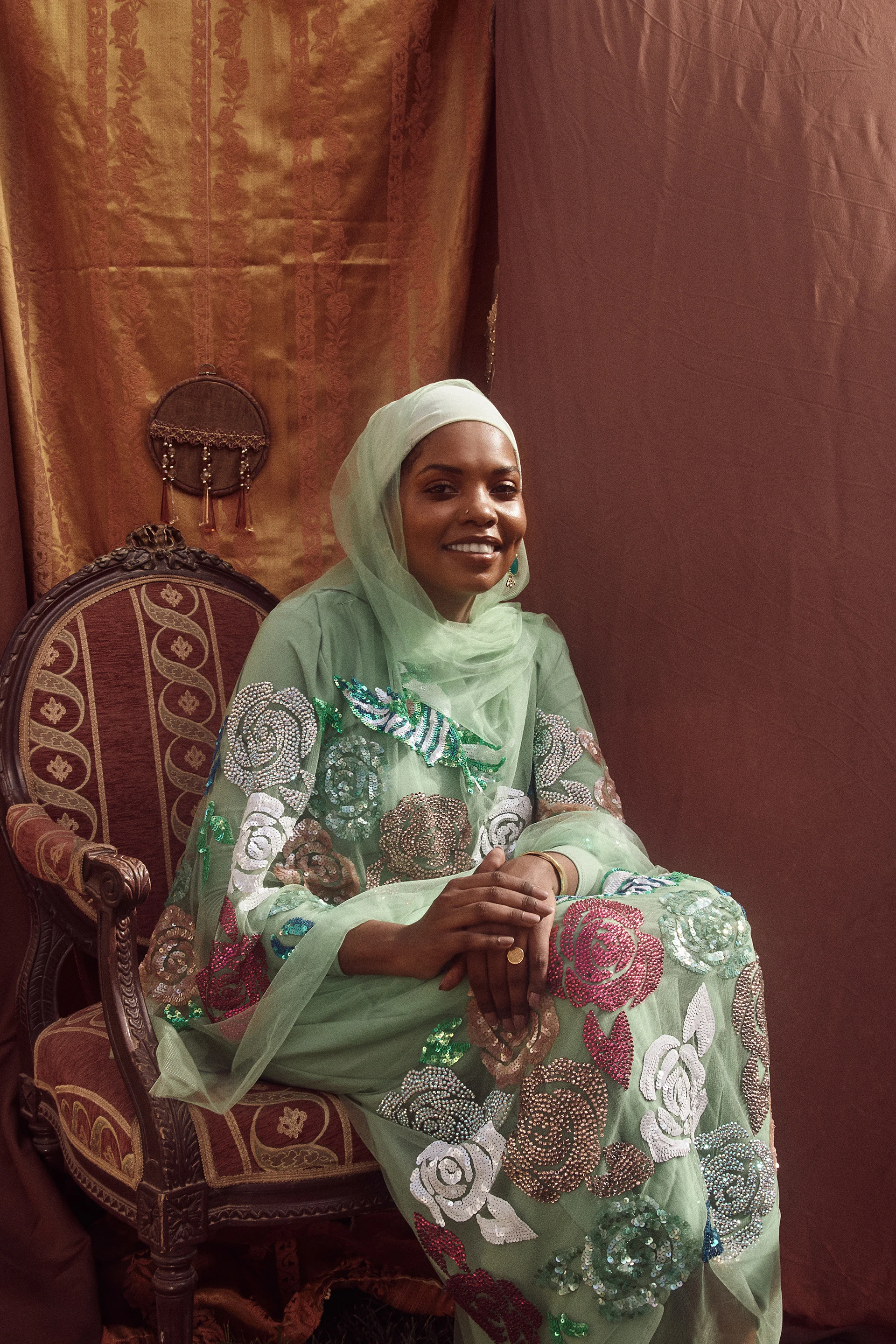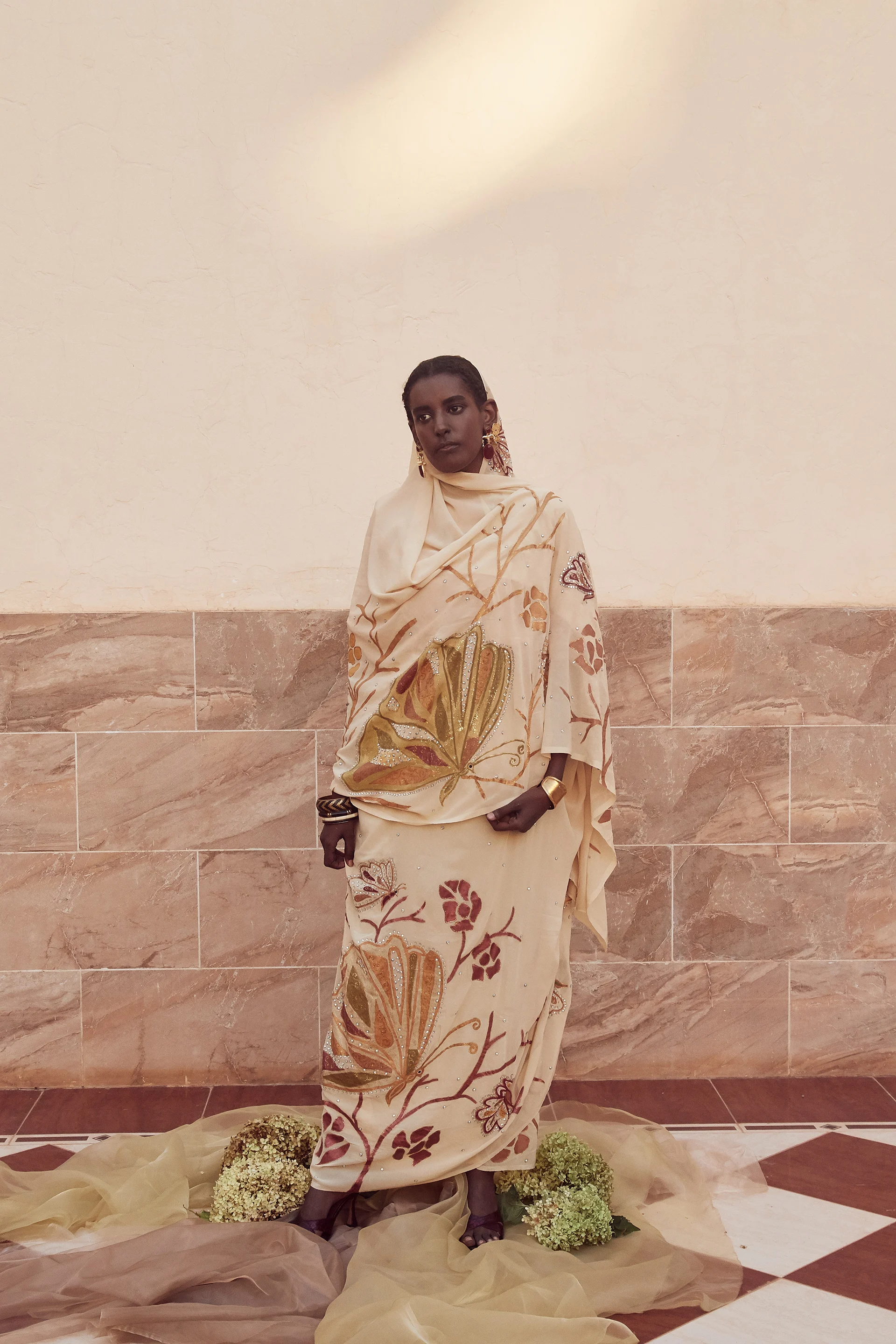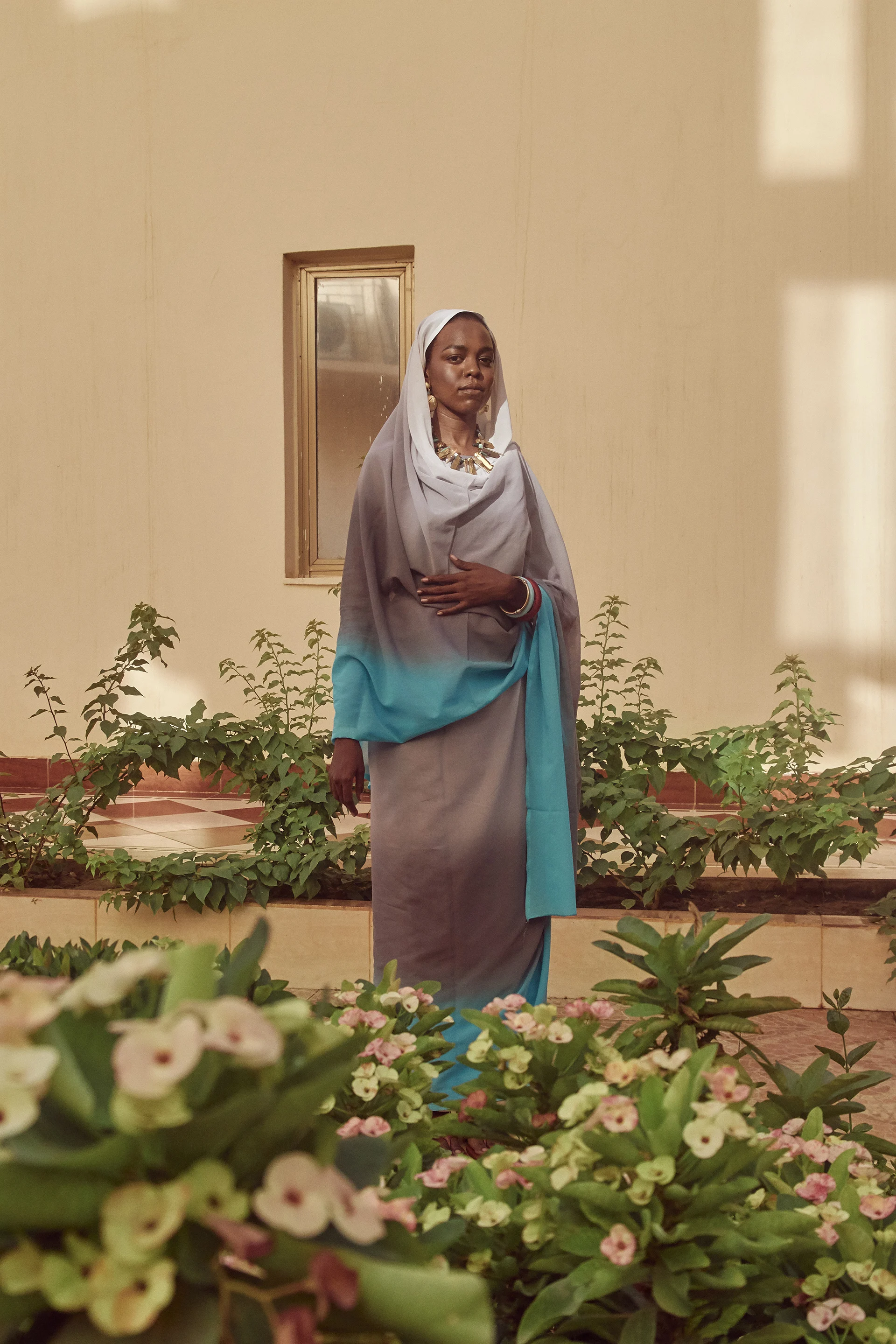
Defining Kandaka — Meet the women leading protest and change in Sudan
Producer: Abisola Oke, Stylist: Yasmine Sabri, MUA: Michelle Leandra, Set Design: Erin Ogarro
Meet the women leading protest and change in Sudan
Since the end of 2018, Sudan’s streets have been filled with protesters fighting for their basic human rights, united by their belief that the change they all want to see is not just possible, but imminent. Here, we commissioned photographer Philipp Raheem and writer Chanté Joseph to capture the situation in Sudan over the past year and speak to four women whose lives have been irrevocably changed, but whose desire to be creative shows no bounds.

Between June 9 and June 15 2019, “Sudan” was typed into Google more than any other time in search history data. This landlocked country with a turbulent past was suddenly propelled onto the world stage via a wave of thousands of ocean-blue Instagram profile pictures. 26-year-old engineer Mohammad Mattar had been killed while trying to protect two women from paramilitary and had become a martyr. The soft shade of blue of his Instagram profile picture became a symbol of global unity with the Sudanese people who were trying to topple an armed and oppressive regime.
Sudan’s former President Omar Al-Bashir came to power in a military coup in 1989 and, until 2011, ruled Africa’s largest country with an unshakeable iron fist. During his harsh Islamist regime, he oversaw the great departure of millions of Sudanese people alongside genocide, war crimes and torture. He is one of the International Criminal Court’s longest-running fugitives, and it was his long-standing autocratic premiership that catalysed a viral movement in Sudan.
Though the protests started in December 2018, the issue really dates back to 2011, when 99% of South Sudanese people voted to secede from the north, gaining independence and taking the majority of Sudanese oil and wealth with it. This triggered an economic crisis in the north; lines for banks went on for miles as people were unable to take out money due to restrictions on withdrawals. The country was simultaneously dealing with a significant bread shortage. In order to cope with this, Al-Bashir’s government tripled the prices of bread which then sparked the initial protests in Atbara before slowly spreading across the country and consuming the capital of Khartoum. What started as a protest about living conditions and economic survival morphed into a wider movement to remove Al-Bashir from office. His desire to quash protests through curfews and emergency state laws only served to fuel the anger.
Months of protesting reached a peak when demonstrators took the fight to the military’s headquarters in Khartoum on April 6 2019. They occupied the square directly in front of the headquarters, refusing to leave until the army removed Al-Bashir. Just five days later the military announced the president had been overthrown, which seemed like a win until a council of military generals, led by Lt-Gen Abdel Fattah Abdelrahman Burhan, formed a Transitional Military Council (TMC) that was unwilling to engage with civil society groups. Protestors believed that a progressive Sudan was not one ruled by the military; especially one so entrenched in Al-Bashir’s hostile regime. Demonstrators were not settling for second best, exhausted but enraged by 30-years of tyrannical rule under Al-Bashir, they were hungry for change, desperate for a brighter future. Peaceful protests continued to bring Sudanese people together despite the familial and tribal alliances that often kept them apart. Things felt hopeful, but hope was only an orchestrated illusion.
At 6am on Monday June 3, the paramilitary government forces, known as Rapid Support Forces (RSF), viciously attacked peaceful protestors at the sit-in area with heavy gunfire, teargas and sound bombs. They also opened fire inside the city’s East Nile Hospital, adding to the chaos. This was a cowardly attempt to disperse demonstrators and quash their movement.
According to the Sudanese Doctors' Syndicate, over 100 people were killed on or after June 3 and weeks later, bodies with concrete blocks tied to them were being pulled from the Nile. An internet shutdown meant that very little footage from the massacre was available until a month later, but the damage had already been done. The following day, the UN Security Council met to investigate the issue and three days later the African Union suspended all activities with Sudan. Global pressure was mounting and this enthused protestors; the massacre did the exact opposite of its intention, it inspired new and infectious energy for change. #BlueForSudan was trending globally and the world was rooting for Sudanese protestors.
Things felt hopeful, but hope was only an orchestrated illusion.
Sudan is no stranger to revolution. The Sudanese people have an unquenchable thirst for justice and peace. Similar to the revolution of summer 2019, the movements in both 1964 and 1985 were about deposing despotic military rulers. It required a tactical collaboration of opposition parties, professional and trade unions to fight back, reclaim power and institute democracy. However, despite these feats, it took no more than five years – in both cases – for the military to take back control. These anxieties are very present in the conscience of Sudanese protesters, but they are not conceding as of yet. Demonstrators want Al-Bashir’s deep roots in politics weeded out, they want justice for the 250 lives allegedly lost in the conquest for peace and, most importantly, they want accountability.
As the future of Sudan is mapped out, we must continue to remember the voices of women, tell their stories and share their hopes and fears for the future.
2019’s Sudanese revolution was won by women. They made up nearly 70% of demonstrators while their art, images, songs and general presence made for significant viral moments in the protest. The image of Alaa Salah clad in a white shimmery robe styled as a traditional “toub,” leading chants from the top of a white car, swarmed by a sea of people and flashlights became a defining symbol of the protest. This moment typified the fearless and strong attitudes of women in the movement. More than anyone, Sudanese women yearned for freedom from Al-Bashir and his desire to please ultra-conservative Islamic militias that enforced restrictions on their freedom. Under his rule, the lives of women in Sudan were stringently controlled by the state and little was put in place to protect them. In Sudan, marital rape is legal, girls as young as 10-years-old are legally allowed to marry and women can be prosecuted for wearing certain clothes. In this movement, women were the target of rape and harassment from soldiers, so their desire to overthrowing Bashir and his military cronies was personal.
Despite being a significant part of this protest and the birth of a new Sudan, women are still being disenfranchised at the highest political level. When campaigners and the country’s military began negotiating the future peace of Sudan, women were pushed aside and their contributions belittled once again. This is why our recent trip to Sudan was so important, as the future of Sudan is mapped out, we must continue to remember the voices of women, tell their stories and share their hopes and fears for the future.
Producer: Abisola Oke
Stylist: Yasmine Sabri
MUA: Michelle Leandra
Set Design: Erin Ogarro





